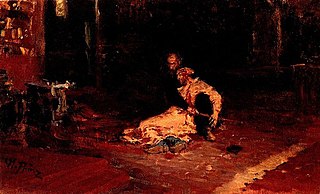Σε Θράκη και Μακεδονία γενικά έχουμε εγκατάσταση Κουμάνων
In 1239–1240, a large group of Cumans fleeing from the Mongols crossed the Danube. This group, which had an estimated population of over 10 thousand, wandered for a long time to find a suitable place to settle in Thrace. John III Doukas Vatatzes who wanted to prevent Cumans invasion of Byzantine lands and to benefit from their military capabilities invited Cumans in Byzantine service. He settled some of them in Thrace and Macedonia, and some in Anatolia to the Meander (Menderes) Valley and some to the Phrygia and Bithynia.
https://en.wikipedia.org/wiki/Cumans
και φυσικά μπασταρδεύτηκαν με τους ντόπιους σε όλα τα κλιμάκια, ακόμη και τα αυτοκρατορικά

Syrgiannés/Sıçğan It is seen that some of the Cumans, who were on the way to prevent the Seljuk Turks expansion and were taken into Byzantine service after a Mongolian invasion, also served in the imperial palace and rose to high positions in time. As a matter of fact, Syrgiannés (Sytzigan: Sıçğan: Rat), who was the son of one of the Cuman begs, was baptized and married a woman from the Palaiologos family, and later received the title of Megas Domestic. The presence of his descendants in the Byzantine Empire continued for nearly 100 years. The last representative of this The Cuman Family, which was later assimilated into Byzantine Culture was also named Syrgiannés, just like the first member of the family. Syrgiannés, who was the governor of Macedonia and Thrace, was the elder emperor II. After participating in the struggles between Andronikos and his grandson that started in 1320, he fell out of favor and led a dull life until he was killed by the emperor's men in 1334.
Βέβαια, η αποασιατοποίηση τους είχε αρχίσει πολύ πιο πριν, όπως έγραψα και προηγουμένως, στην ιστοριογραφία καταγράφονται συντριπτικά ως λευκοί, ξανθοί με γαλάζια μάτια

The looks of a typical Cuman are a matter of debate. This is because in spite of their Eastern origins, several sources point at them being white, blue-eyed, and blond. It is important to elaborate, however, that the full range of available data sketches a more complex picture. While the written sources predominantly emphasize a fair complexion (e.g. Adam of Bremen referring to them as "the blond ones") the craniometric and genetic data, as well as contemporary art, support the image of a people highly heterogenous in appearance. Skulls with East Asian features are often found in burials associated with the Cumans and Pechenegs in Europe.
The genetic material is mixed, albeit that European matrilineal DNA predominates (see also below). Unlike the written sources, paintings and miniatures from between the 12th and 14th century (close in time to the settlement of Cumans to Central Europe) tend to support the picture of a mixed population that is suggested by the craniometric and genetic analyses. In the Anjou Legendarium Cumans are depicted with East Asian features and dark hair, while a fresco in the Kraskovo church in Slovakia confirms the stereotype of the blond Cuman.
There are also depictions of Cumans with Caucasian features, but dark complexion (e.g. in the Képes Krónika Pictum). Notably, all of these phenotypes can be traced to groups described in Chinese and Arab sources, that are assumed to have later merged in the Cuman–Kipchak confederation. Fair complexion, e.g. red hair and blue or green eyes, were already noted by the Chinese among the Qincha (Kipchak), while the Tiele (to whom the Qun belonged) were not described as foreign looking, i.e. they were likely East Asian in appearance. A dark complexion was attributed to the Pechenegs by Ibn Fadlan, who did not specify, however, if their features are European or Asian. The Kipchak, Qun and Pechenegs all assimilated into the Cuman-Kipchak confederation, eventually.








